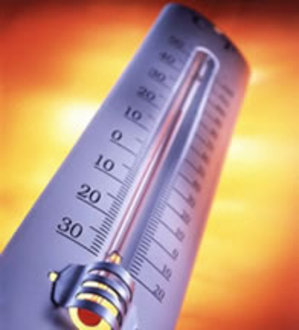< Imperial | Dry Lab(Difference between revisions)
|
|
| (69 intermediate revisions not shown) |
| Line 1: |
Line 1: |
| - | =Model Development for Infector Detector= | + | {{Template:IC07navmenu}} |
| | + | <br clear="all"> |
| | + | __TOC__ |
| | | | |
| - | ==Formulation of the problem==
| + | <center>'''Welcome to the Modelling Sub-Portal Page'''</center><br><br> |
| - | As described earlier, catheter-associated urinary tract infection (CAUTI) in the clinical setting is a prevalent problem with extensive economic impact. The underlying cause of many such infections can be attributed to the formation of biofilm, by aggregating-bacteria on the surface of urinary catheters.
| + | <center>This page serves as a shuttle to the modelling phase of each project:Infector Detector and Cell-by-Date. </center> |
| | + | ---- |
| | | | |
| - | [[Image: IC07_QS.png|right|thumb|500px| Role of AHL (HSL) quorum-sensing in biofilm formation]]
| + | <center>Select one of the following links to be transferred to the modelling of the relevant project.</center> |
| | | | |
| - | Infector Detector (ID) is a simple biological detector, which serves to expose bacterial biofilm. It functions by exploiting the inherent AHL (Acetyl Homoserine Lactone) production employed by certain types of quorum-sensing bacteria, in the formation of such structures.<br>
| |
| | | | |
| - | Our project attempts to improve where previous methods of biofilm detection have proven ineffective: first and foremost, by focussing on the sensitivity of the system, to markers of biofilm: in this case, low levels of AHL production (which represents the bacterial "chatter" of such aggregating bacteria).
| + | {| border="0" width="80%" align="center" |
| | + | |- align="center" |
| | + | || |
| | + | {{Click || image = ID ModelPage.jpg| link = Imperial/Infector_Detector/Modelling | width = 200px | height = 198px }} |
| | + | <br> [[Imperial/Infector_Detector/Modelling| '''Infector Detector''']] |
| | + | || |
| | + | {{Click || image = ThermoDA.jpg| link = Imperial/Cell_by_Date/Modelling | width = 200px | height = 200px }}<br> |
| | + | [[Imperial/Cell_by_Date/Modelling| '''Cell-by-Date''']] |
| | + | |} |
| | + | <br clear="all"> |
| | | | |
| - | In doing so, a complete investigation of the level of sensitivity to AHL concentration needs to be performed - in other words, what is the minimal AHL concentration for appreciable expression of a chosen reporter protein. Furthermore, establish a functional range for possible AHL detection. How does increased AHL concentration impact on the maximal output of reporter protein?<br>
| |
| - | Finally, how can the system performance be tailored, by exploiting possible state variables (e.g. varying initial LuxR concentration and/or concentration of pLux promoters).
| |
| | | | |
| - | The system performance here revolves most importantly around AHL sensitivity; however, the effect on the maximal output of fluorescent reporter protein and response time is, likewise, of great importance.
| + | <center> | [[Imperial/Dry_Lab | Dry Lab >>]]</center> |
| - | | + | |
| - | ==Selection of Model Design and Structure==
| + | |
| - | | + | |
| - | Since the novelty of our solution revolves around the use of cell-free systems as a "bacterial-free" solution in the clinical setting, a simple system is selected. Our approach involves a modified version of the bioluminescence machinery employed by the bacterium ''Vibrio Fischeri''.
| + | |
| - | | + | |
| - | In fact, the characterization of this machinery, forms the setting for the first detailed description of the above-mentioned quorum-sensing phenomenon (Engebrecht and Silverman, 1984 and Engebrecht et al., 1983).
| + | |
| - | A system which employs two regulatory proteins LuxR and LuxI, which, together with the autoinducer protein, AHL, control the expression of the in-house reporter (luciferase).
| + | |
| - | | + | |
| - | Our system maintains the general flavour of this configuration; involving a marginally-varied sensor and reporter element.
| + | |
| - | In fact, an already present system is utilized, for its simplicity and good definition - [http://partsregistry.org/Part:BBa_T9002| T9002]. This forms our construct 1.
| + | |
| - | | + | |
| - | One of the questions posed in the formulation of the model, involved exploring means of "tweaking" the system to achieve improved performance (sensitivity/maximal output/response time). A possible solution could involve introducing purified LuxR into the system, and in this way impose steady-state far sooner than construct 1. Theoretically, this should shorten response time. It is for this reason, that a second construct will be investigated. Construct 2 thus differs only wrt the elimination of the constitutive promoter pTET. (here, LuxR is introduced directly).
| + | |
| - | | + | |
| - | <font color = red>~~Insert diagram illustrating both constructs </font><br>
| + | |
| - | | + | |
| - | ==References==
| + | |
| - | | + | |
| - | ==Motif==
| + | |
| - | *Images - black borders, pastel backgrounds (pale) - see QS image
| + | |


